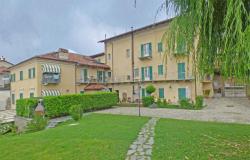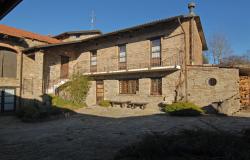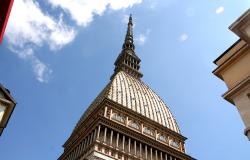 The Modern and Contemporary Art Gallery of Turin (GAM) has opened its doors on a brand-new exhibit, entitled Collage/Collages dal Cubismo al New Dada (Collage/Collages from Cubism to the New Dada.
The Modern and Contemporary Art Gallery of Turin (GAM) has opened its doors on a brand-new exhibit, entitled Collage/Collages dal Cubismo al New Dada (Collage/Collages from Cubism to the New Dada.
Running until January 6, it is part of a cycle of projects devoted to 20th-century art, introduced by the popular and critically successful exhibit Metropolis, which looked at imaginary cities designed between 1910 and 1920.
Curated by Maria Mimita Lamberti and Maria Grazia Messina, the exhibit proposes a historical reading of collage techniques first created during experiments by Pablo Picasso and Georges Braque.
These techniques were widely accepted by other avant-garde movements, from Italian Futurists to Dadaists. The route explores the artistic developments of the last century, from the first decade through to the early 1960s, charting the determined expressiveness of a technique that appeared banal and fragile but was in reality quite versatile.
Collage techniques were initially developed as a challenge to painting, and then made headway on their own.
The exhibit's subtitle recalls the wide chronological range covered by the show, as shown by the 160 works from major Italian and international collections, both public and private.
Among the many pieces on show are works by Pablo Picasso from the Berggruen Museum of Berlin and the Peggy Guggenheim Collection in Venice), Georges Braque (a papier collee from the Ulmer Museum of Ulm), three pieces by Juan Gris (from a private collection and the Fundacio Telefonica of Madrid) and two Gino Severini from his Parisian period.
Other works include a futuristic collage by Ardengo Soffici, pieces by Carlo Carra' (by whom there are two masterpieces on show: "Composition with Female Head" from the Pushkin State Museum of Moscow and "Fanciullo Prodigio" from the MART in Rovereto), as well as contributions from Giamcomo Balla, Mario Sironi, Filippo de Pisis and Alberto Savinio.
The Dada period is represented with works by Max Ernst, Hannah Hoch, George Grosz, Otto Dix and Kurt Schwitters.
Other names include: Arp, Hans and Sophie, Alberto Magnelli, Prevert, Penrose, Hugnet, Eileen Agar, Miro', Ernst, Henri Matisse, Appel, Jorn, Vedova, Motherwell , Kline, Villegle', Hains, Rotella, Burri, Dubuffet, Capogrossi, Turcato, Tancredi, Baj and Scarpitta.
The 1960s are represented with conceptual works by Piero Manzoni and Giulio Paolini, as well as art by Ron Kitaj from the US, suggesting new metalinguistic developments that marked the start of the demise of this style, which came to be replaced by assemblages of goods and environments in the Pop Art movement.













